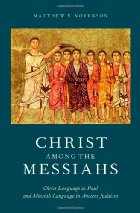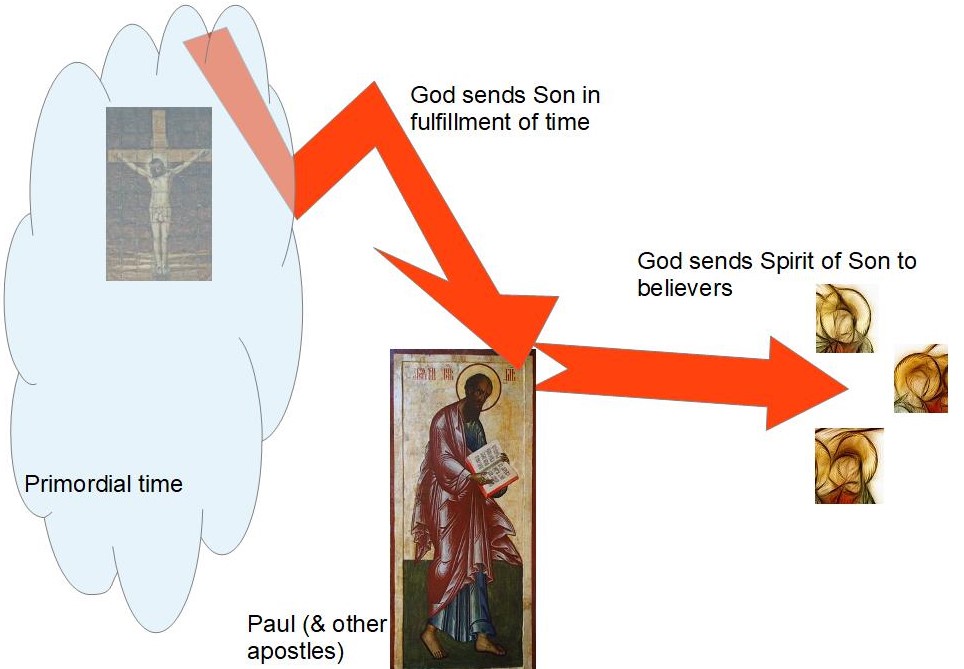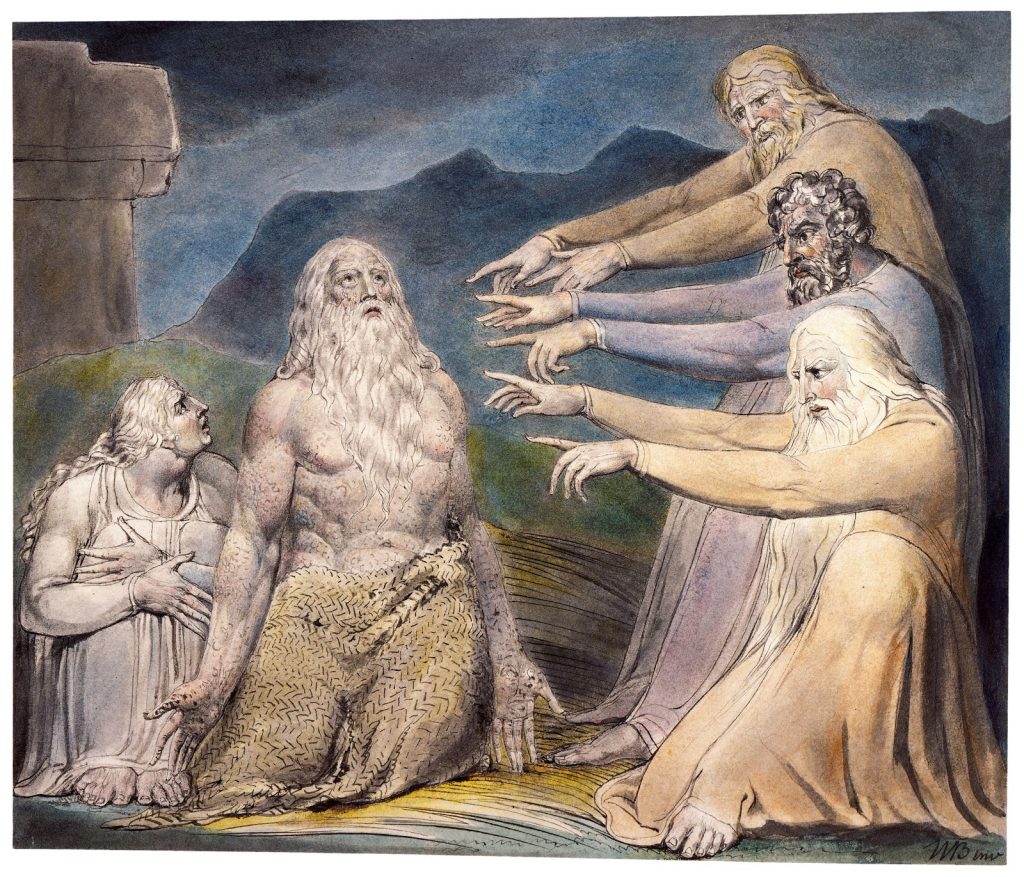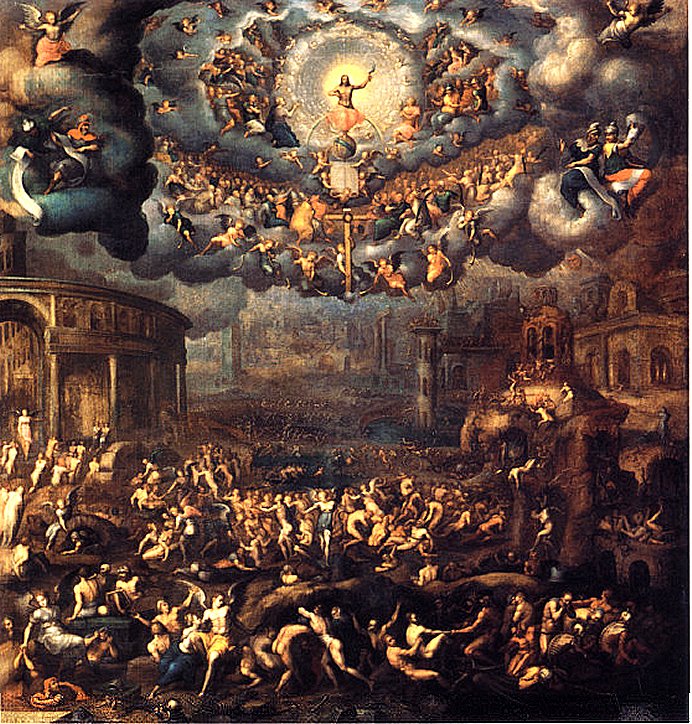The next time I hear someone say that no-one would make up a saviour who suffers and dies I will be able to point them to the table in this post. I think we can conclude that a suffering and dying messiah is exactly what we should expect to emerge from a world where all seemed lost and there was no hope for real deliverance in this life. Note, for example, #13. The table is taken from Ethelbert Stauffer’s New Testament Theology, to which I was directed by Morna Hooker in her book, Jesus and the Servant.
The Principal Elements of the Old Biblical Theology of Martyrdom
(Chief passages and proof texts)
A. The shape of martyrdom
| 1. The people of God is the martyr nation among the Gentiles. | Psa. 73.3 ff.; 78.1 ff.; 79.9 ff.; 82.3 ff.; Jdth. 9.8; Isa. 42.1 LXX; AEn. 85 if.; 89.59 if.; IV Ezra 3.27 ff.; MEx. on 20.23; SB, II, 284 |
| 2. Those people of God who are loyal to the Torah are persecuted by the Gentiles and their accomplices | DaG, 3; 9; 11 f.; I Mac. 2.27 if.; II Mac. 5.27; 7.2, 30; IV Mac. 5.16 f; PsSol. 17.19; AssMos. 8.6; Martls. 2.8 ff.; PsPhil. 6.9, 16; San. 49a; Cantr. 8.6 f. |
| 3. Those people of God who are loyal to the Torah are persecuted by their apostate fellows | Psa. 21; 40.9 f.; 68; II Chron. 24.1; Wisd. 2 f.; 5; PsSol. 4; 12; Dam. 1.20; IV Ezra 7 |
| 4. The people of God persecute the messengers of God | (III βασ 19.2 ff.; Ex. 17.4; 32.9; Num. 14.10; 17.14; Jer. 6.10; 9.25; 11.19; Isa. 40 if.; II Chron. 36.16; Jub. 1.12; Martls. 3; 5; Paraljer. 9.20 ff. |
| 5. The blood of Abel cries to heaven till the end of time | AEn. 22.7; TestAbr. 11 |
| 6. Even the picture of Messiah has traces of the martyr in it | SB, II, 273 ff.; IV Ezra 7.29; 10.1, 16, etc., in Jeremias, Deutsche Theologie, II, 1929, 106 ff. |
| 7. Even the picture of the Son of Man has traces of the martyr in it | Joachim, Jeremias, briefly: Motifs from the Servant Songs in the texts about the Son of Man in AEn. 37 ff; Traditions about the past earthly life, the present heavenly existence and the future return of the Son of Man in AEn. 39.4 ff; 71.14 ff.; 90.31, etc. |
–0–
B. The fate of martyrdom
| 8. The confessors live in the desert, far from the wickedness and pursuits of the world | I Mac. 1.56; PsSol. 17.16 f.; AssMos. 9; Martls. 5.11 ff; PsPhil. 6.7 ff; Dam. 6.5 |
| 9. The persecutors use suspicions and slanders, false accusations and false witnesses against those who are faithful to God | Jer. 15.15; Psa. 26.12; 34.11; DaΘ. 6.5 f.; Wisd. 2.22; III Mac. 7.11; Ps. Sol. 12.1ff; Martls. 3.8 f. |
| 10. The martyrs are treated undeservedly like thieves and killed and in this sense suffer innocently | Psa. 34.7, 19; 58.4 f; Wisd. 2.19, 22; 3.5; PsSol. 12.4; II Mac. 7.40; IV Mac. 12.14 |
| 11. The martyrs frequently suffer and die in the arena, which was a recognized institution also in Palestine in hellenistic times | III Mac. 4.11 [IV Mac. 5.1; 15.20]; cf. Jer. 12.5; Eccl. 9.11; I Mac. 1.14; II Mac. 4.12 ff; IV Mac. 4.20; JosAnt. 12.241; 15.268 ff, 341; remains in Jerusalem, Samaria, Rabbath-Ammon, Gerasa, etc. |
| 12. Martyrs are often scourged and crucified, and ‘cross’ therefore appears occasionally as the inclusive term for a martyr’s fate | AssMos. 8.1; JosAnt. 12.256; Gnr. on 22.6; further A. Schlatter, Die Märtyrerer den Anfängen der Kirche, 1915, 70 and n. 259 above |
| 13. The martyr’s death is a sign of his coming victory | Dan. 3; Wisd. 2.17; Martls. 5.7; Ber. 61b; AZ. 18a |
| 14. Lists of martyrs kept memory fresh about the typical murder of the saints in history | IV Mac. 16.20 f; 18.11 ff. L. Zunz, Die gottesdienstl. Vortrage der Juden, 1832, 142; Elbogen, 203; 228 ff.; Kaufmann, REJ, 1887, 250; SB, I, 582 |
| 15. History has also seen some miraculous deliverances which God has wrought for his faithful ones | Dan. 3.49 f; III Mac. 6.18 ff.; 7.16; PsPhil. 6.9, 17 f; Gnr. on 15.7; 22.19 |
–0–
C. God’s Glory and the shame and glory of martyrdom Continue reading “Why a Saviour Had to Suffer and Die? Martyrdom Beliefs in Pre-Christian Times”


 On the other hand, some questions are more pressing. Even not making a decision is still a decision. When I think of life-or-death decisions that demand a choice, I can’t help but recall the series
On the other hand, some questions are more pressing. Even not making a decision is still a decision. When I think of life-or-death decisions that demand a choice, I can’t help but recall the series 










